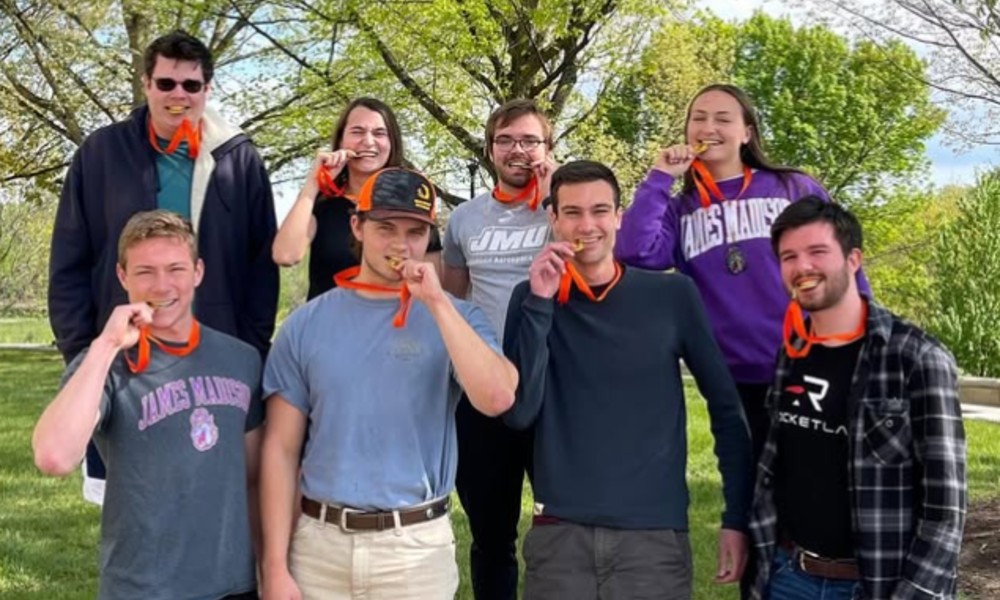Engineering students selected for NASA’s Space Launch Challenge
News
SUMMARY: A team of eight JMU Engineering students is among 71 teams selected nationwide to participate in NASA’s 25th annual Space Launch Challenge.
As part of the challenge, students design, build, test, and launch a high-powered amateur rocket. Each rocket must carry a scientific or engineering payload, showcasing innovative problem-solving and technical skills.
To qualify, teams must submit a comprehensive proposal detailing their project plans, safety measures, and strategies to meet NASA’s strict competition requirements. JMU’s team impressed the competition coordinators with a proposal featuring a full-scale rocket approximately 9.8 feet long, designed to reach an altitude of 4,700 feet. The rocket’s capsule will house instruments to measure acceleration, altitude, and internal temperature during the flight.
The payload includes a STEMnaut, a logo figurine, representing an astronaut. STEMnauts are placed in a flight capsule within the rocket, symbolizing a crew. The goal is to safely retain the STEMnauts during flight and landing while also gathering and transmitting critical data about their journey and landing conditions back to NASA receivers.
“This simulation allows student teams to mimic real-world aerospace missions, combining engineering, communication systems, and safety considerations in a hands-on learning experience,” said Steven Woodruff, Engineering professor and capstone advisor. “STEMnauts help students connect their designs to the challenges faced by actual astronauts and space exploration crews.”
In addition to focusing on engineering and science objectives, students must also engage in outreach activities, including connecting with local schools and managing active social media accounts.
The challenge is not for the faint of heart. Participants must adhere to strict deadlines and thoroughly understand a detailed 100-page handbook of competition rules and guidelines. The students began their work last fall and will conclude their efforts at the end of the spring semester.
While the process is demanding, Woodruff highlighted its transformative impact. “The challenge starts off so daunting,” he said. “As they work through it, they overcome many obstacles, which is the most fulfilling part. This isn’t about textbook knowledge; it’s built around a real NASA mission.”
Woodruff emphasized the value of the hands-on experience. “Although you learn a lot in class, there’s a limit to what you can apply until you’re actually building something. In this project, students are learning on the fly and trying new things—skills you won’t find in a textbook.”
For these eight students, the NASA Space Launch Challenge is an opportunity to merge academic learning with real-world problem-solving, and they are ready to soar.
The challenge will be held from April 30 – May 3 in Huntsville, Alabama.
